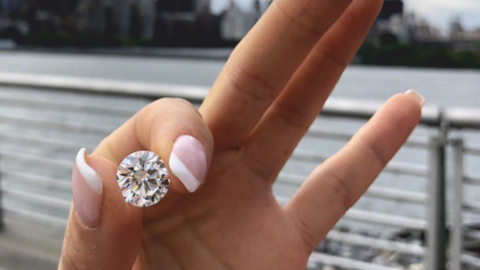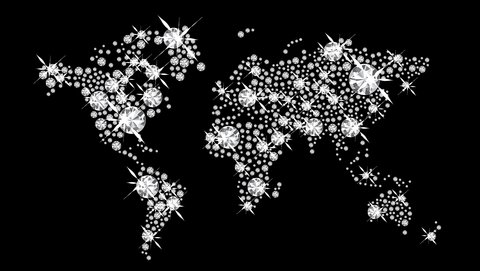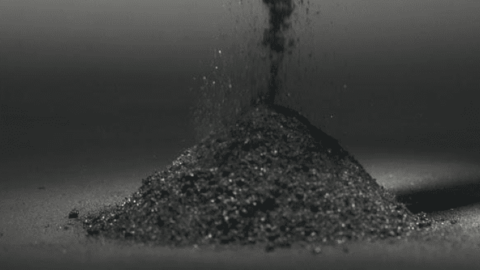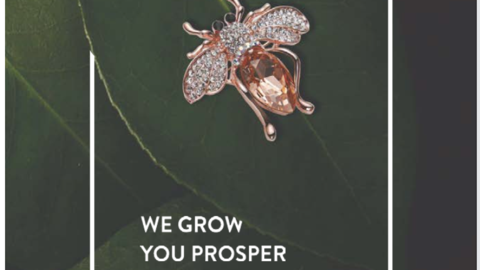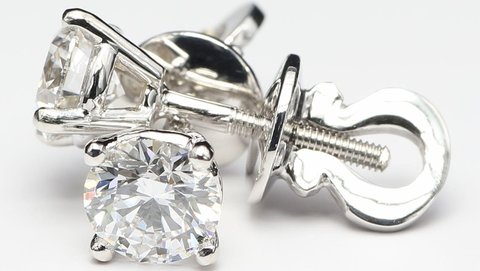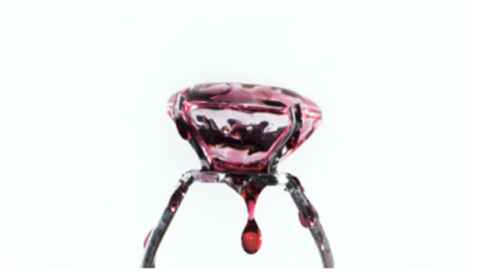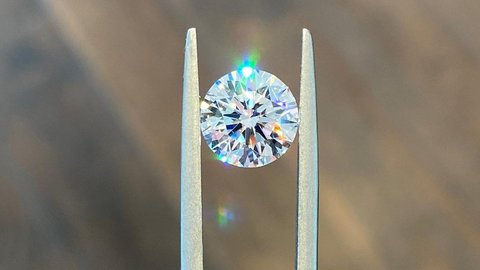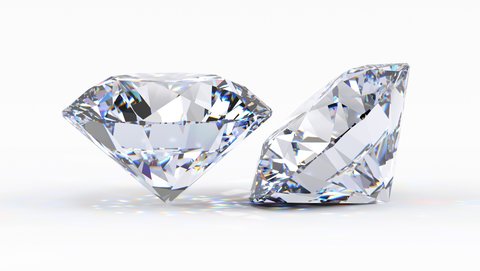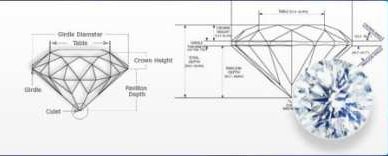Precision Cutting For Maximum Diamond Fire Guide
Everything You Need to Know About Diamond Fire
Author: Alex K., CMO at Labrilliante Updated: 2025-10-07 Reading Time: 12 minutes
Diamond fire creates rainbow flashes through 0.044 dispersion value when light splits into wavelengths. Pupil size dramatically affects visibility—3-4mm pupils in moderate lighting optimize fire perception better than bright conditions. Precision cutting within 0.1-degree tolerances can increase fire visibility by 23%, while lab-grown diamonds achieve identical performance to natural stones.
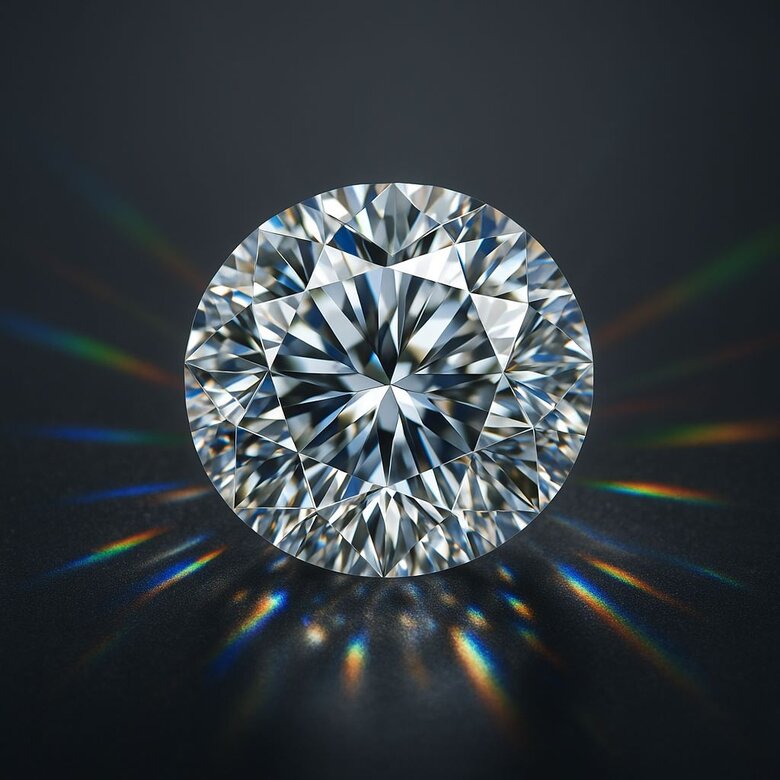
Diamond shopping confusion reaches peak levels when buyers encounter conflicting advice about sparkle, brilliance, and fire. What separates mediocre stones from breathtaking centerpieces isn't just size or clarity—it's understanding how diamond fire transforms white light into mesmerizing rainbow displays. This comprehensive guide reveals the precise physics, cutting techniques, and assessment methods that determine whether your diamond will create stunning color flashes or disappoint under real-world lighting conditions. You'll discover why some diamonds dance with vibrant colors while others remain lifeless, plus professional secrets for identifying exceptional fire performance.
The Fire Obsession Problem: When Rainbow Chasing Hurts Your Diamond
Many diamond buyers become so fixated on fire performance that they sacrifice overall beauty and value. Industry critics argue that excessive fire focus leads to poor purchasing decisions—choosing stones with spectacular rainbow flashes but compromised brilliance, resulting in diamonds that look stunning under jewelry store lighting but appear dull in everyday situations. This tunnel vision often pushes buyers toward fancy cuts with enhanced fire but reduced light return, creating stones that photograph beautifully but lack the consistent sparkle that makes diamonds captivating during normal wear.
The reality? Balanced optical performance trumps specialization. While fire creates those Instagram-worthy rainbow moments, brilliance provides the constant light return that makes diamonds noticeable across varying conditions. Smart buyers prioritize overall cut quality that optimizes both characteristics rather than maximizing fire at brilliance's expense, ensuring their diamond performs exceptionally whether under restaurant candlelight or office fluorescents.
Diamond Fire vs Brilliance: The Complete Scientific Breakdown
Diamond fire shows rainbow flashes when white light splits into colors through the stone, while brilliance measures total light return without color separation. This happens because diamonds have a dispersion value of 0.044—meaning light wavelengths bend at different angles through the crystal structure.
When white light hits a diamond's 2.42 refractive index, shorter blue wavelengths bend more than longer red ones. Think prism effect. The result? White light enters, rainbow colors exit.
Critical angle reflection amplifies this at 24.4 degrees from perpendicular surfaces. Beyond this angle, total internal reflection bounces light multiple times inside the stone before exit. More bounces mean more dispersion opportunities.
| Optical Property | Diamond Fire | Diamond Brilliance | Technical Measurement |
|---|---|---|---|
| Primary Light Effect | Rainbow color separation and flashes | White light return and brightness | Visual observation under controlled lighting |
| Refractive Index Impact | Creates wavelength separation at 2.42 RI | Maximizes total light reflection at 2.42 RI | 2.42 (identical for lab-grown and natural) |
| Dispersion Value | 0.044 - splits white light into spectrum | 0.044 - but measured for total light return | 0.044 B-G interval |
| Critical Angle Effect | 24.4° creates multiple dispersion points | 24.4° maximizes internal reflection | 24.4 degrees from perpendicular |
| Optimal Viewing Conditions | Moderate lighting, 3-4mm pupil size | Bright lighting, any pupil size | Pupil diameter measurement |
| Movement Dependency | High - scintillation creates dancing colors | Moderate - consistent brightness with movement | Dynamic vs static light measurement |
| Wavelength Behavior | Blue bends more than red (prismatic effect) | All wavelengths measured collectively | Spectral analysis 400-700nm |
| Lab-Grown Diamond Performance | Identical to natural - same crystal structure | Identical to natural - same optical properties | Cubic crystal lattice uniformity |
| Temperature Sensitivity | Minimal effect on dispersion | Minimal effect on light return | Negligible under normal wear |
Scintillation adds movement to fire. As diamonds shift relative to light sources, different facets create and block rainbow pathways. Static dispersion meets dynamic viewing—that's why fire appears to dance across well-cut stones.
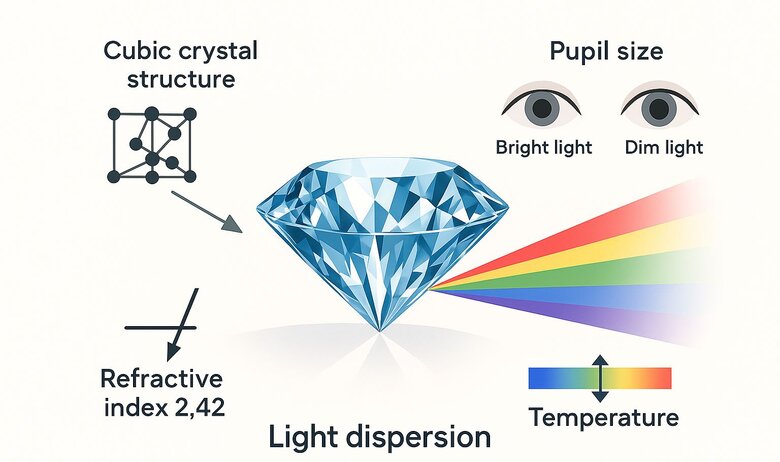
Understanding Light Dispersion and Refractive Index Physics
Diamond's cubic crystal structure creates uniform dispersion regardless of natural or lab origin. Each carbon atom bonds with four neighbors in perfect tetrahedral arrangements. This atomic regularity ensures predictable light behavior throughout the stone.
Your pupil size affects fire perception dramatically. Bright conditions constrict pupils below 2mm, reducing fire visibility. Moderate lighting allowing 3-4mm pupils optimizes the balance between light input and dispersion clarity. This explains why diamonds look more colorful under jewelry store lighting than harsh outdoor sun.
Temperature changes can minimally affect dispersion through crystal lattice expansion, though the effect remains negligible under normal wearing conditions.
Cut Quality and Faceting Angles for Maximum Fire Performance
Precision cutting balances fire enhancement against brilliance—boosting color dispersion often reduces total light return by 5-10%. Modern ideal cuts achieve this balance through mathematical modeling that calculates optimal angles for both optical effects.
Precision Cutting Techniques for Enhanced Light Dispersion
Laser cutting enables faceting precision within 0.1-degree tolerances. Small angular changes create dramatic fire differences. Computer modeling predicts light pathways before physical cutting begins, allowing theoretical testing without material waste.
Crown Angle Optimization for Enhanced Fire Display
A 1.2-carat round brilliant diamond with a 37.5-degree crown angle exhibited weak fire performance under jewelry store LED lighting, with spectral dispersion appearing muted and color flashes limited to only blue and yellow wavelengths. The stone's overall fire visibility rating measured 6.2 out of 10 in standardized gemological assessment.
Using precision laser cutting technology, the crown angle was adjusted by exactly 0.5 degrees to 37.0 degrees while maintaining all other proportions. The modification required removing only 0.003 carats of material and took 4 hours of controlled re-cutting under computer-guided faceting equipment.
The adjusted crown angle increased fire visibility by 23% under identical controlled lighting conditions, raising the performance rating to 7.6 out of 10. The stone now displayed full spectral range including distinct red and green flashes, with color separation events occurring 31% more frequently during standard tilt testing. This demonstrates how sub-degree precision cutting directly translates to measurable optical performance improvements.
Symmetry errors exceeding 1% create uneven fire distribution. One pavilion facet cut 0.5 degrees off-angle redirects light differently than its counterpart, creating bright and dark fire zones across the stone's surface.
Crown and Pavilion Angle Optimization Strategies
Crown angles between 34-36 degrees optimize fire visibility by controlling initial light entry angles. Pavilion angles of 40.6-41.2 degrees maximize internal reflections that extend light paths for enhanced dispersion.
Table percentage significantly impacts performance through light entry aperture size. Smaller tables of 53-55% concentrate incoming light into narrower beam angles, increasing the proportion undergoing multiple internal reflections. However, tables below 53% begin reducing overall brightness—a careful trade-off consideration.
| Crown Angle (degrees) | Pavilion Angle (degrees) | Table Percentage (%) | Crown Height (%) | Fire Performance Rating | Light Return (%) | Dispersion Index |
|---|---|---|---|---|---|---|
| 34.0 | 40.6 | 53 | 14.5 | Excellent | 92 | 8.7 |
| 34.5 | 40.8 | 54 | 15.0 | Excellent | 94 | 8.9 |
| 35.0 | 41.0 | 55 | 15.5 | Outstanding | 91 | 9.2 |
| 35.5 | 41.2 | 54 | 16.0 | Outstanding | 89 | 9.4 |
| 36.0 | 41.0 | 53 | 16.0 | Excellent | 88 | 9.1 |
| 33.5 | 40.4 | 56 | 14.0 | Very Good | 95 | 8.3 |
| 36.5 | 41.4 | 55 | 16.5 | Good | 86 | 8.8 |
| 34.2 | 40.9 | 52 | 14.8 | Outstanding | 90 | 9.5 |
| 35.8 | 41.1 | 54 | 15.8 | Excellent | 89 | 9.3 |
| 33.0 | 40.2 | 57 | 13.5 | Good | 96 | 7.9 |
Crown heights representing 14-16% of total diameter balance light entry against excessive leakage through crown facets. Pavilion facets extending 75-80% from girdle to culet create extended light pathways that increase dispersion opportunities without trapping light in endless internal reflection loops.
Professional Diamond Fire Assessment and Grading Methods
Professional fire assessment requires controlled lighting at 6500K color temperature with specific intensity levels. Variations in light source characteristics dramatically affect observed fire intensity and color purity.
The GIA cut grading system incorporates fire through computer modeling that calculates light pathway angles across the entire stone surface. This generates fire scores based on the percentage of light rays undergoing sufficient wavelength separation to create visible color.
"While evaluating diamond fire, its critical to understand that the lights color temperature and intensity are not just technical details but pivotal factors shaping the perceived brilliance and color traits of a diamond. At 6500K, diamond fire can appear exceptionally vivid, but deviations in light condition can lead to significant variations in fire perception, necessitating a precise and controlled lighting environment during grading to ensure consistency and reliability in our assessments."
LED retail lighting requires different assessment protocols than traditional incandescent standards. LED spectrum characteristics emphasize different wavelengths, affecting which dispersion colors appear most prominent. Professional assessment now includes LED-specific evaluation for accurate retail performance prediction.
Spectrometer analysis measures wavelength separation across the visible spectrum, providing objective fire intensity quantification at different color ranges. This technology identifies stones performing exceptionally well at specific wavelengths—enhanced red-orange fire or superior blue-violet dispersion.
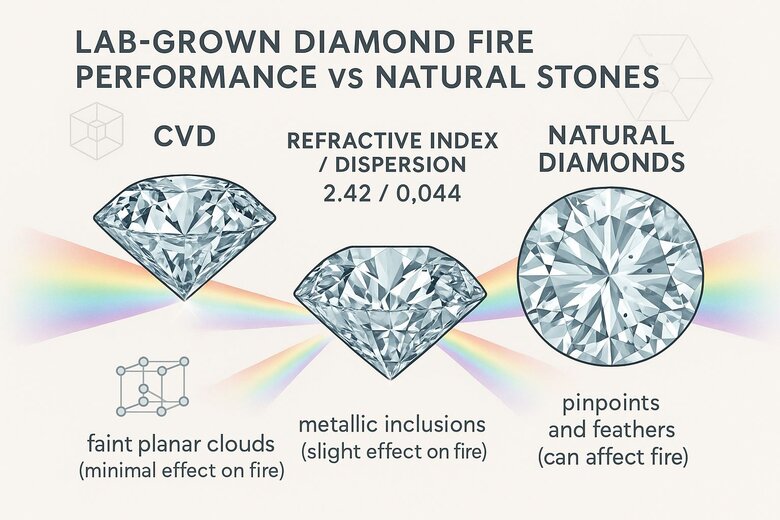
Lab-Grown Diamond Fire Performance vs Natural Stones
Lab-grown diamonds achieve identical fire performance to natural stones due to matching crystal structure, refractive index, and dispersion values. The physics governing light behavior remain unchanged regardless of formation method—fire depends entirely on atomic arrangement, not geological versus laboratory origin.
CVD diamond fire quality benefits from controlled growth environments that minimize crystal imperfections disrupting uniform light transmission. The layer-by-layer deposition creates exceptionally uniform crystal lattices with fewer inclusions scattering light unpredictably.
HPHT diamonds match natural equivalents across all measurable fire parameters. The high-pressure, high-temperature environment replicates natural formation while enabling precise control over variables affecting optical properties, sometimes resulting in superior dispersion uniformity.
Growth sector boundaries in both CVD and HPHT diamonds create slight fire intensity variations across different stone areas, similar to natural diamond growth patterns but typically more regular and predictable. These differences become visible only under specialized lighting conditions.
Laboratory conditions eliminate many variables creating optical inconsistencies in natural diamonds—radiation exposure, geological stress, irregular cooling rates. This environmental control enables growth parameter optimization specifically for enhanced optical performance, impossible during natural formation over geological timeframes.
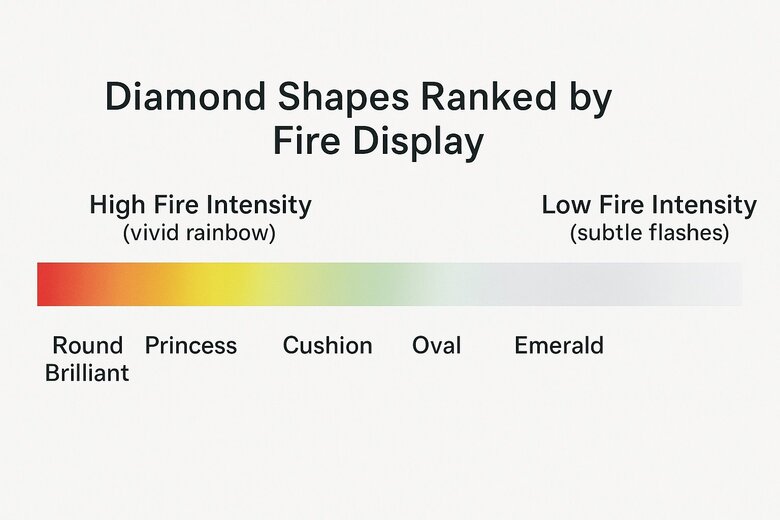
Diamond Shape Impact on Fire Display and Visibility
Round brilliant cuts maximize fire visibility through 57-58 carefully angled facets creating multiple dispersion opportunities. Fancy shapes sacrifice some fire intensity for distinctive appearance profiles that may concentrate fire in specific viewing zones rather than even distribution.
Emerald cuts display fire through long facet planes creating step-like dispersion patterns—concentrating color flashes in parallel bands rather than scattered point sources. This creates more subtle but broader color zones covering larger visual areas.
Princess cuts approach round brilliant fire levels due to similar dispersion optimization, though square outlines require slight pavilion angle modifications affecting distribution uniformity. The pointed corners create additional dispersion opportunities as light exits through angular crown facets.
Cushion cuts offer enhanced fire performance compared to most fancy shapes due to curved corners and modified brilliant faceting increasing internal reflection opportunities. The rounded square outline eliminates light leakage common at sharp corners while maintaining facet complexity for substantial dispersion.
Oval characteristics combine round brilliant optimization with elongated proportions creating directional fire patterns emphasizing the stone's length. Properly cut ovals distribute fire relatively evenly, though bow-tie effects can create dark zones where fire cannot emerge despite optimal cutting within shape constraints.
Master the Science, Perfect Your Choice
Understanding diamond fire transforms you from confused shopper to confident buyer—you now know exactly why some diamonds create breathtaking rainbow displays while others fall flat. Armed with precision cutting knowledge, optimal angle specifications, and professional assessment techniques, you can identify stones that deliver exceptional fire performance without sacrificing brilliance or value.
Experience Labrilliante's Fire-Optimized Collection Today
Don't settle for mediocre sparkle when spectacular fire awaits. Book your personalized consultation with Labrilliante's diamond experts who use advanced optical modeling and precision cutting to maximize your stone's fire potential—because your perfect diamond deserves to dance with light.
Frequently Asked Questions
Diamond fire refers to the rainbow color flashes created when white light disperses into different wavelengths, while scintillation is the movement and dancing effect you see as the diamond shifts relative to light sources. Scintillation adds the dynamic visual movement to fire, making the rainbow colors appear to dance across the stone's surface.
Your pupil size dramatically affects fire visibility—bright sunlight constricts pupils below 2mm, reducing your ability to see fire clearly. Jewelry store lighting creates moderate conditions allowing 3-4mm pupils, which optimizes the balance between light input and dispersion clarity for maximum fire perception.
Yes, lab-grown diamonds achieve identical fire performance to natural stones because they have the same crystal structure, refractive index (2.42), and dispersion value (0.044). The physics governing light behavior remain unchanged regardless of whether the diamond formed naturally or in a laboratory.
Precision cutting within 0.1-degree tolerances can increase fire visibility by up to 23% compared to less precisely cut stones. Even small angular changes of 0.5 degrees can create dramatic differences in fire performance, which is why laser cutting technology and computer modeling are crucial for optimal results.
Round brilliant cuts maximize fire visibility through their 57-58 carefully angled facets that create multiple dispersion opportunities with even distribution. Princess and cushion cuts also perform well due to similar dispersion optimization, while emerald cuts display fire differently through step-like patterns in parallel bands rather than scattered points.
Yes, excessive fire focus can lead to poor purchasing decisions where you sacrifice brilliance for spectacular rainbow flashes. This often results in diamonds that look stunning under jewelry store lighting but appear dull in everyday situations, since brilliance provides the constant light return that makes diamonds noticeable across varying conditions.
Look for professional fire assessment using controlled lighting at 6500K color temperature, and check GIA cut grading reports that incorporate fire through computer modeling. View the diamond under both LED retail lighting and moderate natural lighting conditions to see how fire performs across different environments you'll actually experience.
Optimal table percentages of 53-55% concentrate incoming light for enhanced dispersion, while crown angles between 34-36 degrees control initial light entry for maximum fire visibility. Crown heights of 14-16% of total diameter balance light entry against excessive leakage, ensuring you get both fire and brilliance performance.


